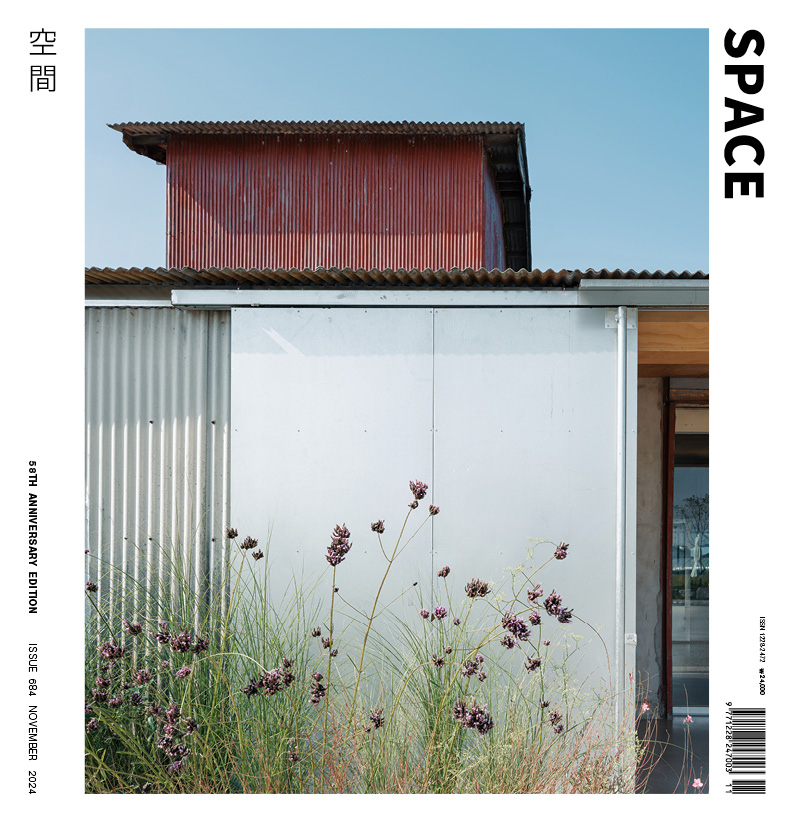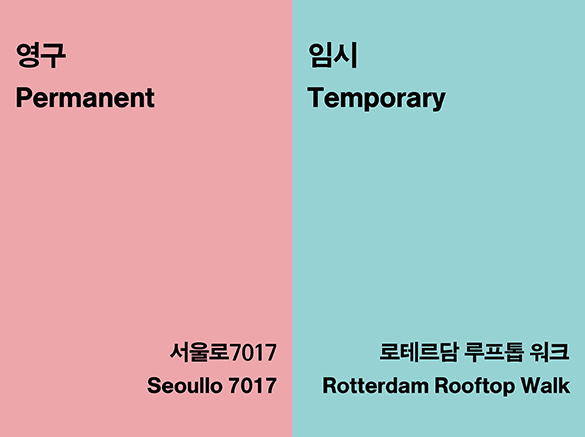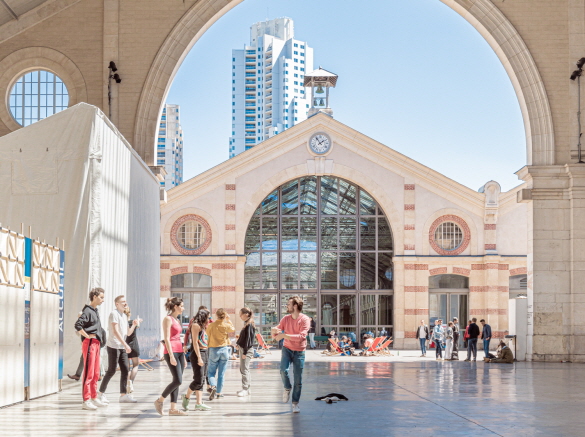SPACE November 2024 (No. 684)
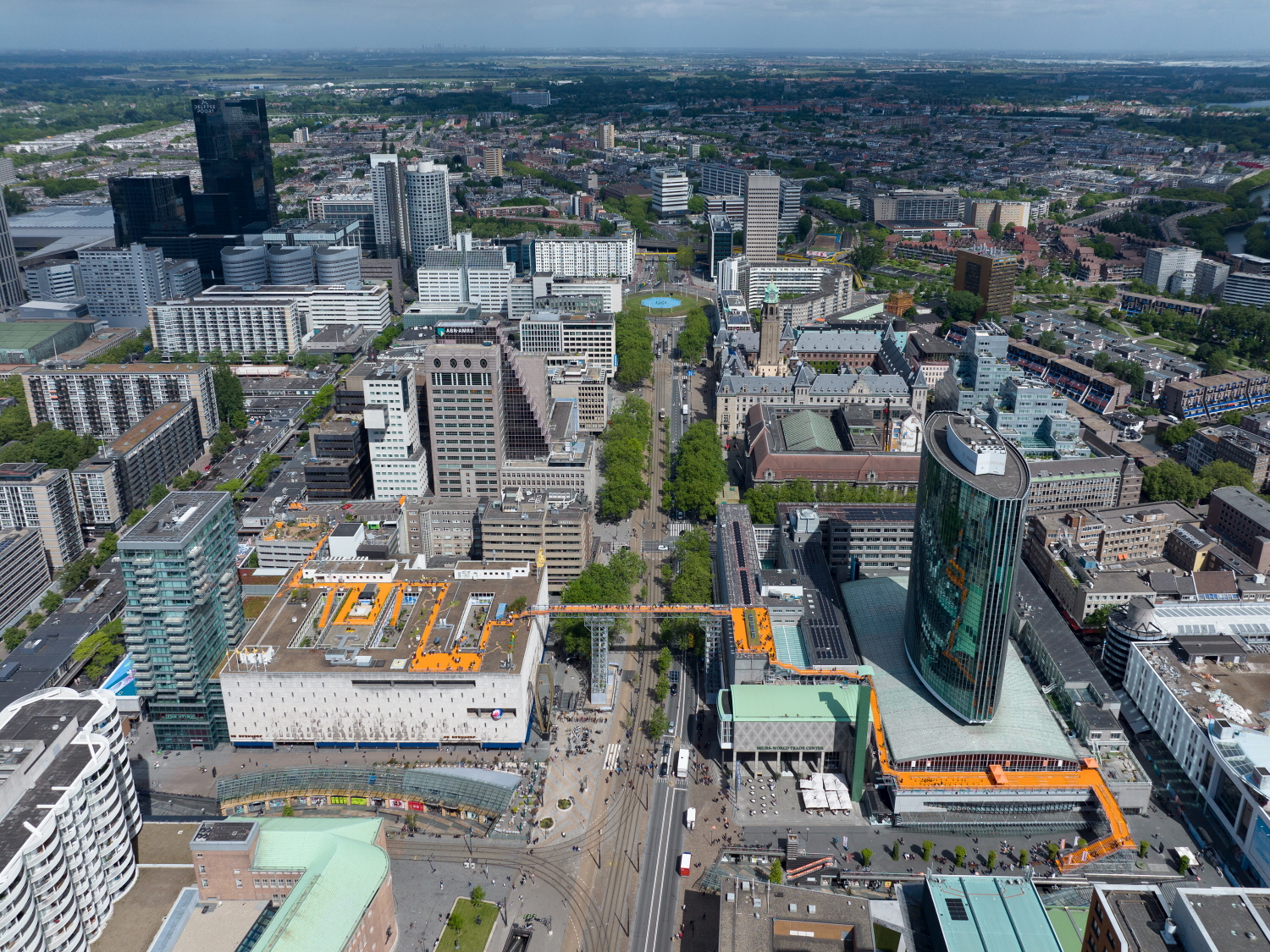
Project Rotterdam Rooftop Walk
Architect MVRDV
Partner Rotterdam Dakendagen
Location Rotterdam, Nederlands
Length 600m
Construction period 2022
Opening May 26 – June 24, 2022
Client Rotterdam Dakendagen, City of Rotterdam

2008 Introduction of the Green Roof Subsidy policy
2012 Opening of Europe’s first rooftop farm, DakAkker (City of Rotterdam + ZUS Architects)
2014 Opening of the rooftop park, DakPark (City of Rotterdam + residents)
2014 First Rotterdam Rooftop Dakendagen festival
2017 Launch of the local government initiative, Life@Uran Roofs
2018 Opening of the rooftop garden at Erasmus MC (City of Rotterdam + Erasmus MC Foundation)
2018 Development of the green roof solution app ‘Klimaatdakje (Climate Roof)’ (City of Rotterdam + Sobolt)
May 2018 Publication of Rotterdam Rooftops (City of Rotterdam + Esther Wienese)2019 Development of the Hofbogen elevated railway rooftop garden (expected completion in 2027, City of Rotterdam + Dudok Group)
2019 Launch of the National Dakenplan
2020 Development of an investment cost calculation tool for multifunctional roof development (Life@Uran Roofs)
2020 Opening of the 1,500m² rooftop garden at the public art storage facility, Depot Boijmans Van Beuningen (City of Rotterdam + MVRDV)
May 2021 Conversion of the Peperklip housing complex’s roof into a rooftop garden (subsidised by Life@Uran Roofs)
July 2021 Development of rooftop space solutions and publication of Rooftop Catalogue (City of Rotterdam + MVRDV + Rotterdam Dakendagen)
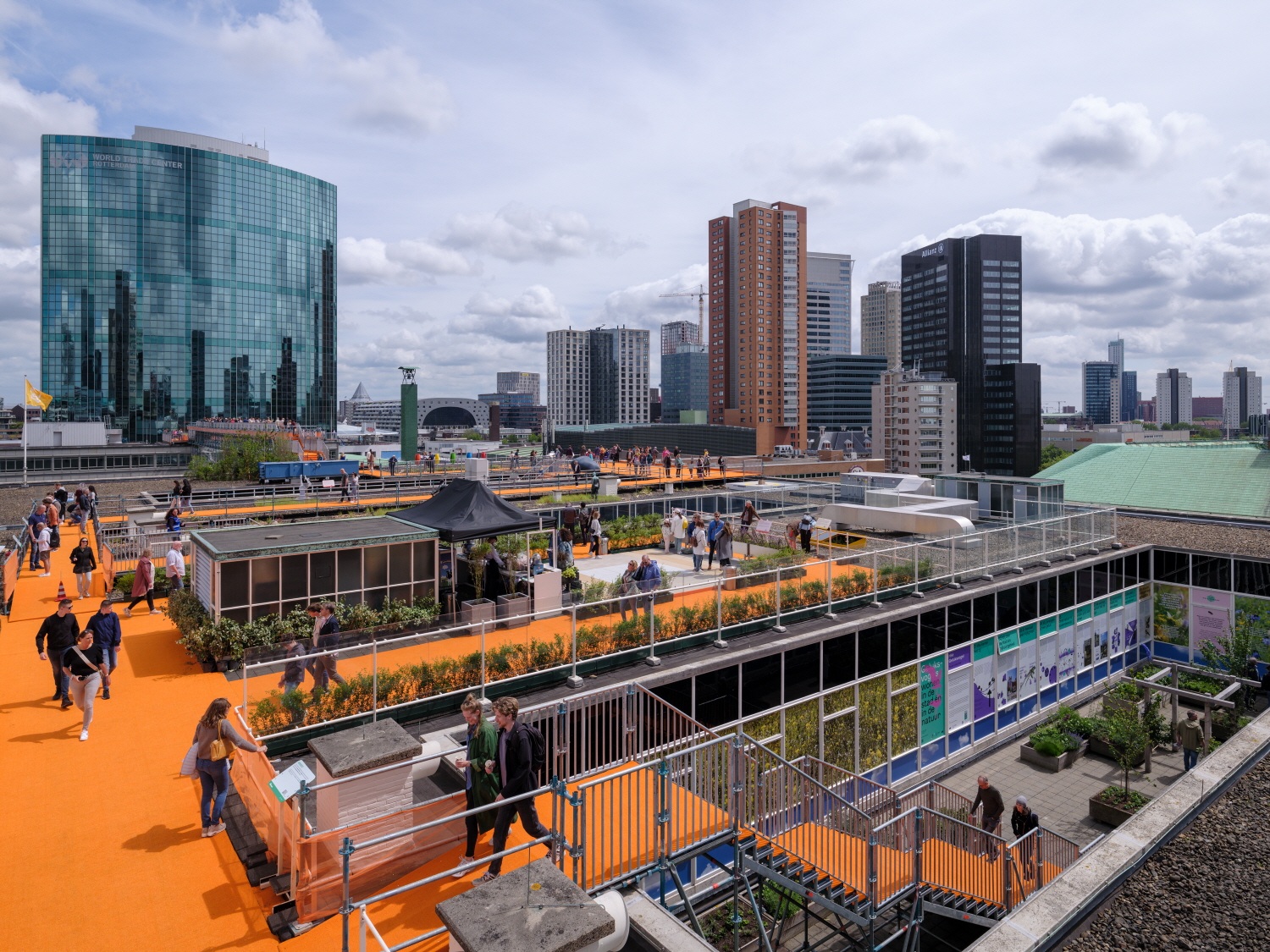
A Festival on the Rooftops
From the 26th of May to the 24th of June 2022, a new path opened 30m above the streets of Rotterdam. An orange walkway connecting various rooftops stretched across the bustling city centre, making a bold statement. Designed by MVRDV and Rotterdam Dakendagen▼1 at the request of the city, the Rotterdam Rooftop Walk showcased how rooftops in dense urban environments can serve as a ‘second layer’ in public infrastructure. For over a month, citizens and tourists enjoyed the festival while seeing the city from a fresh perspective. Though the structure was dismantled afterward, it left a lasting impression, opening people’s eyes to the potential of rooftop spaces.
A Long Story, Short
Using rooftops in modern architecture isn’t exactly a new idea. But with rising urban density and growing challenges around housing, climate, and energy, making the most of rooftops has become a must for not only architects but also policymakers and property owners in Rotterdam. The city’s efforts in this area dates back to 2008. Rotterdam, with 90% of the city below sea level, has always had to manage water levels carefully. Eventually, the city shifted its attention from the ground to the rooftops. There are 18.5km² of unused flat roofs in Rotterdam—an area six times the size of Yeouido in Seoul. To make the most of this space, the city introduced the Green Roof Subsidy programme, offering building owners up to 500 EUR for every 1,000L of water stored on green roofs that hold 30mL of water per square metre. The city also kept pushing forward by turning key urban spots into examples of how green roofs can make a difference. Standout projects include DakAkker (2012), Europe’s first 1,000m² rooftop farm; Dakpark (2014), a park created from a converted railway yard in collaboration with local residents; the rooftop garden at Erasmus MC (2018); and the 7,600m² natural rooftop at the Peperklip residential complex (2021). Over time, green roofs evolved into the concept of multifunctional roofs, categorised by seven colours depending on their function: red roofs for community spaces, blue roofs for rainwater storage, and yellow roofs for sustainable energy production, among others. This colour system helped the city promote the many benefits of multifunctional roofs in a more intuitive and organised way, encouraging building owners to combine different functions as they saw fit. The challenge, however, was that very few of the buildings in Rotterdam were city-owned. The goal of the subsidy programme was to secure 800,000m² of multifunctional roofs by 2030, but the success of this plan rested in the hands of the stakeholders—building owners and residents. The city, along with various private entities, continued to make efforts to encourage participation. The key was to improve understanding and accessibility of the programme. To this end, LIFE@Urban Roofs, an initiative focused on multifunctional roofs, launched an online tool that allowed users to easily calculate the load capacity, costs, and potential subsidies for their roofs based on existing information. Additionally, in collaboration with MVRDV and Rotterdam Dakendagen, the city released the Rooftop Catalogue in 2021, distributing it for free. This catalogue featured 130 ideas for repurposing rooftops, with illustrated prototypes and clear data developed from an architect’s perspective, sparking interest among building owners and developers. The following year, the development of RoofScape, a software programme that catalogued all of Rotterdam’s rooftops, brought it a step closer to reality. Aimed at professionals and citizens alike, the programme allowed users to adjust the values of the different uses and variables that could be applied to each roof, and to see a 3D image of the rooftop landscape as it would actually appear. Rotterdam Rooftop Walk emerged from this process.
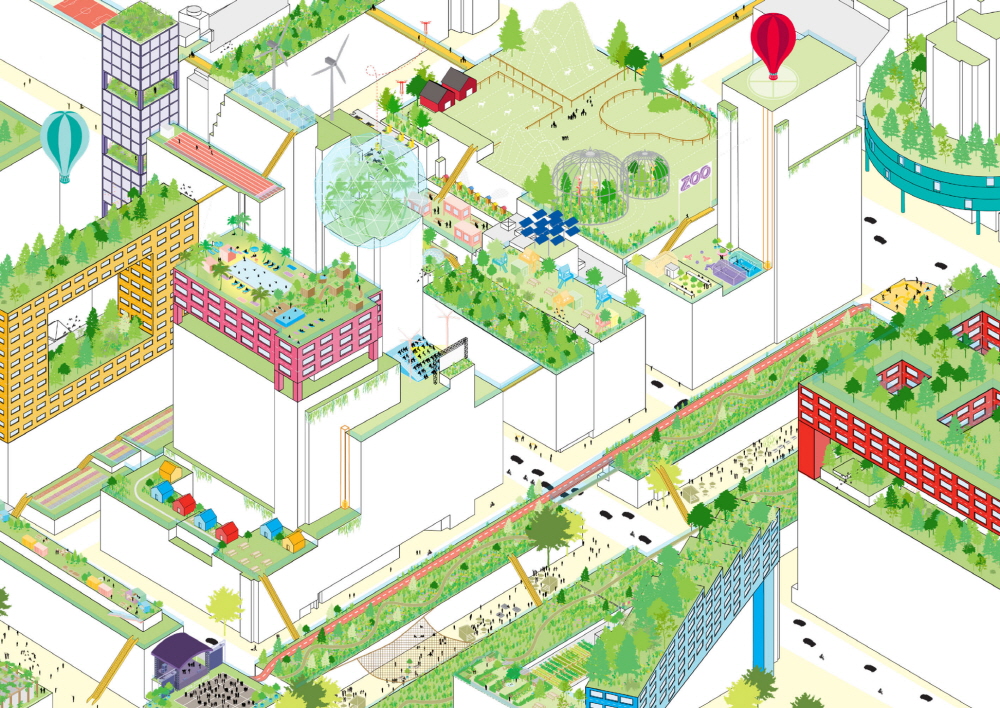
Rooftop City, Rooftop Catalogue (2021)
Why a Festival?
A festival on the rooftops, people on the rooftops—it’s an image anyone living in a busy city might have imagined at least once, even without creative faculties. But experiencing it in reality is a different story. The reason this vision could be brought to life was because it was designed as a temporary, one-month event. No temporary event is going to transform a city overnight, but it can plant the seeds of change. The power of a festival lies in its timing and openness. Its brevity makes it freeing, and people are more open during festivals. It introduces new perspectives to those who never cared about urban sustainability, such as building owners and investors, and creates room for experimentation. Yang Keunbo (principal, Urban Architecture Laboratory SUM) compared the situations in Seoul and Rotterdam, stating, ‘In most developed countries, the private sector takes the lead in discovering new agendas, forming consensus through participation from various social actors, and then institutionalising them. Unrealistic proposals at first can eventually become feasible through this process.’ He also noted that the Rotterdam Rooftop Walk falls under this process: ‘If it had been built as a permanent structure, the initial construction and maintenance costs would have been too high,so until a certain level of social consensus is formed, it’s approached as an event-based promotion.’ By 2018, 10 years after the subsidy programme began, Rotterdam had 360,000m² of green roofs and 168,000m² of solar panels installed across the city. In 2019, the Government of the Netherlands established the National Dakenplan, a public-private partnership to explore the potential of 1,300km² of rooftops across the Netherlands, aiming to create new standards for structural policies, funding, and building regulations. Over the past 16 years, with the start and end of the projects clearly aligned in the same direction, numerous stakeholders – just as diverse as the range of rooftops – have planned projects that continue to expand the scope of these initiatives.
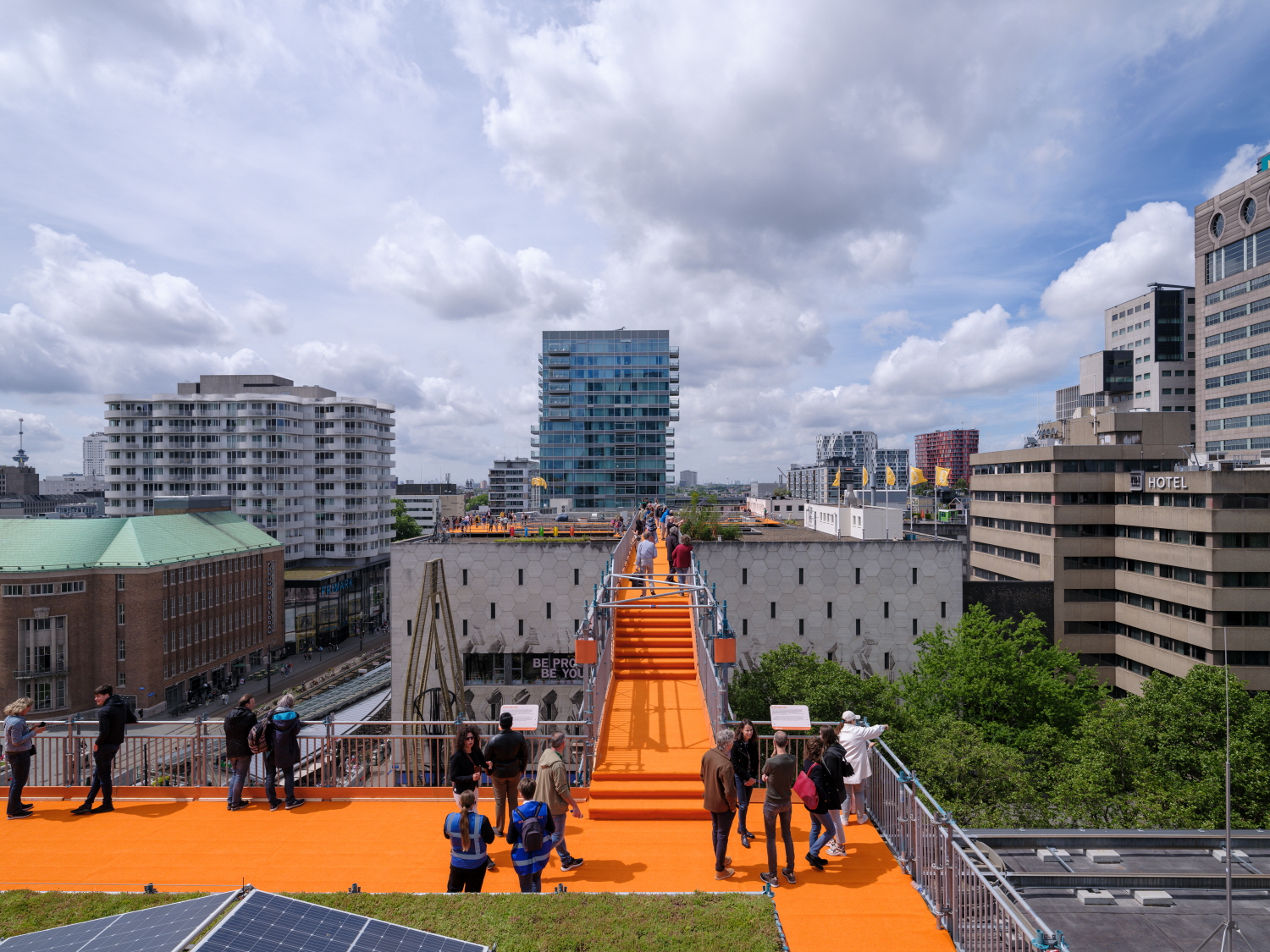
_
1 Rotterdam Dakendagen translates to ‘Rotterdam Rooftop Days’. Since 2014, this organisation has been emphasising the potential of rooftops by building permanent and temporary rooftop networks across Rotterdam, promoting sustainable public spaces, strengthening urban communities, and reducing urban heat. It’s also the name of the annual rooftop festival they host.
